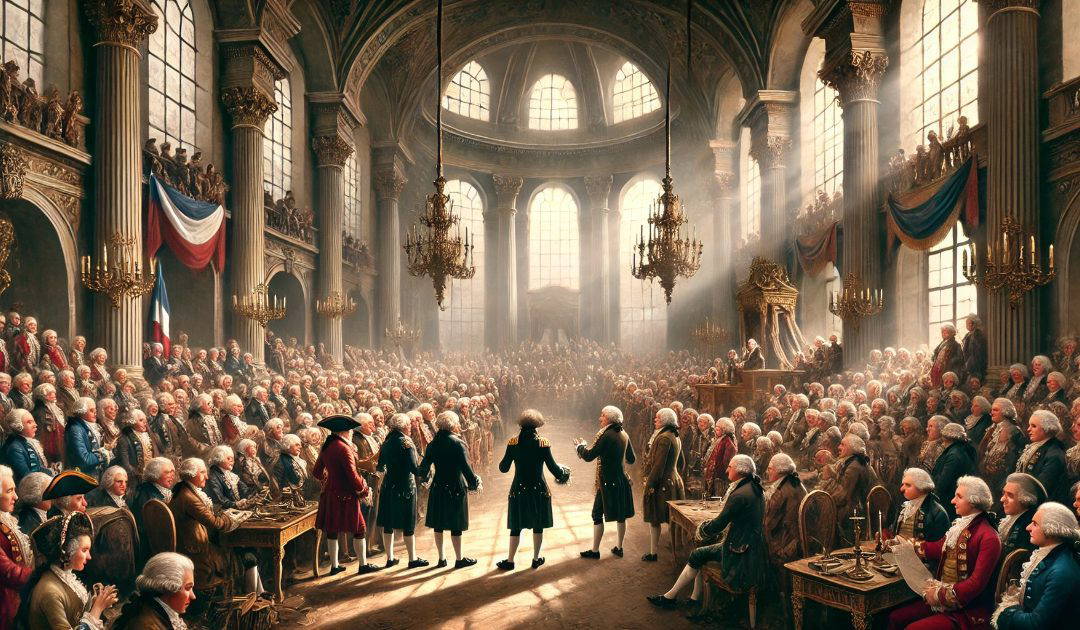On the 5th of May, 1789, the Estates General in France convened for the first time since 1614. The Estates General is a key event in my work in progress, the fifth book of the Sir Anthony Standen Adventures.
The Estates General, a pivotal institution in the history of France, offers insight into the socio-political landscape that shaped the French Revolution. Comprising three distinct estates, it served as an advisory assembly to the king. While its roots trace back to the medieval period, its role in the late 18th century was crucial, ultimately igniting the flames of revolution. This blog post will delve into the structure, significance, and eventual transformation of the Estates General, bringing into focus its impact on French society and governance.
The Estates General was a representative assembly that brought together three estates or social classes in France: the clergy, the nobility, and the common people, also known as the Third Estate.
- The First Estate (Clergy): This estate comprised the religious leaders of the Catholic Church, which was a dominant force in France. The clergy enjoyed a significant amount of power and wealth, often exempt from taxes. They held sway over the moral and spiritual direction of the nation.
- The Second Estate (Nobility): The nobility included the aristocrats who were also largely exempt from taxes and owned vast lands. Members of this estate held key positions in the government, military, and society, enjoying privileges that were often resented by the other classes.
- The Third Estate (Commoners): This estate represented the majority of the population, including peasants, city workers, and the bourgeoisie (middle-class professionals and merchants). Unlike the first two estates, the Third Estate bore the brunt of taxation and had little political power, despite their crucial role in the economy.
Historically, the Estates General was called upon during times of crisis. Its role was advisory, often summoned by the king to aid in decision-making, particularly regarding taxation and reforms. However, it did not have legislative power.
For much of its existence, the Estates General had been largely ignored, with the monarchy preferring to govern through appointed ministers. The last time it had been assembled before the Revolution was in 1614, reflecting the king’s reluctance to share power.
Economic hardship, widespread discontent, and political pressure forced King Louis XVI to summon the Estates General in 1789. France was on the brink of financial collapse, and the king needed approval to levy new taxes.
As the Estates General convened in May 1789, a significant issue loomed: voting procedures. Traditionally, each estate had one vote, allowing the first two estates to outvote the Third Estate despite its larger population. This inequity galvanized the Third Estate, leading to demands for voting by head, giving them a proportional voice.
Amidst these tensions, the Third Estate declared itself the National Assembly, vowing to draft a new constitution. This bold move marked the beginning of a shift in power and the onset of the French Revolution. The famous Tennis Court Oath followed, where members pledged not to disband until France had a constitution.
The Estates General’s transformation into the National Assembly was a watershed moment, symbolizing the end of absolute monarchical rule and the birth of revolutionary fervour. It set the stage for the storming of the Bastille and the eventual overthrow of the monarchy.
The Estates General’s convocation and subsequent evolution laid the groundwork for modern representative democracy in France. It highlighted the inherent inequalities in the old regime and underscored the power of popular will.

